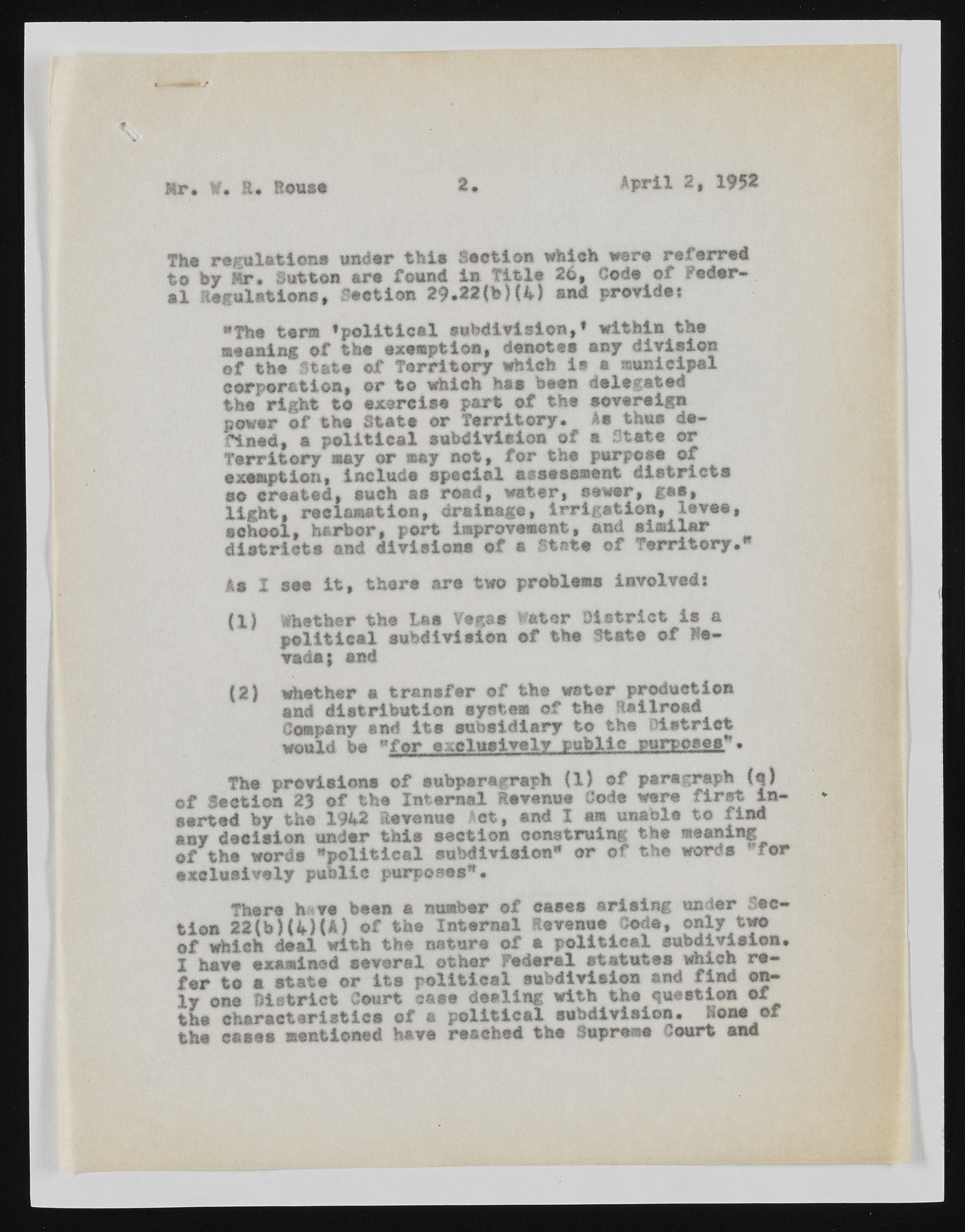Copyright & Fair-use Agreement
UNLV Special Collections provides copies of materials to facilitate private study, scholarship, or research. Material not in the public domain may be used according to fair use of copyrighted materials as defined by copyright law. Please cite us.
Please note that UNLV may not own the copyright to these materials and cannot provide permission to publish or distribute materials when UNLV is not the copyright holder. The user is solely responsible for determining the copyright status of materials and obtaining permission to use material from the copyright holder and for determining whether any permissions relating to any other rights are necessary for the intended use, and for obtaining all required permissions beyond that allowed by fair use.
Read more about our reproduction and use policy.
I agree.Information
Digital ID
Permalink
Details
More Info
Rights
Digital Provenance
Publisher
Transcription
Mr* W. E* Roust a* April 2* 1952 Th® regulations under this Section which were referred to by Mr# Sutton art found in Title 26, Code of federal Regulations, Section 29.22(b)(4) sad provide: "The term ’political subdivision,* within the meaning of the exemption, denotes any division of the State of Territory which is a municipal corporation, or to which has been delegated the right t© exorcise part of the sovereign power of the State or Territory. At thus defined, a political subdivision of a State or Territory may or may not, for the purpose of exemption, include special assessment districts so created, such as road, water, sewer, gas, light, reclamation, drainage, irrigation, levee, school, harbor, port improvement, and similar districts and divisions of a State of Territory.** is I see it, there are two problems involved* IX > W hether th e las Vegas M ater D i s t r i c t i s a political subdivision of the State of Nevada | and (2) whether a transfer of the water production and distribution system of the Railroad Company and its subsidiary to the District would be "for exclusively public purposes*. The provisions of subparagraph (1) of paragraph (|) of Section 23 of the Internal Revenue Code were first Inserted by the 1942 Revenue Act, and I am unable to find any decision under this section construing the meaning of the words "political subdivision" or of the words Tor exclusively public purposes". There h ve been a number of cases arising under Section 22(b)(4)(A) of the Internal Revenue Code, only two of which deal with the nature of a political subdivision. I have examined several other Federal statutes which refer to a state or its political subdivision and find only one District Court case dealing with the question of the characteristics of a political subdivision. Sons of the cases mentioned have reached the Supreme Court and

